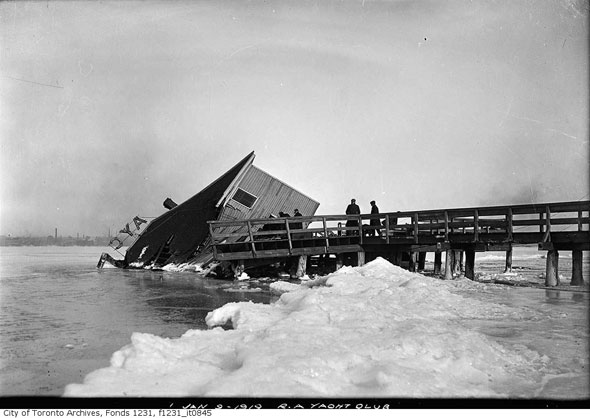
When the wet and windy edges of Hurricane Sandy brought heavy rain and high winds to Toronto this week it was by no means from the first major storm to bring disruption to the city. Spectacular storms have pounded the north shore of Lake Ontario numerous times since in recorded history, often leaving death, destruction, and disruption in their wake.
Here are a few doozies from the archives that played an important role in shaping our city's psyche.
April 14, 1858
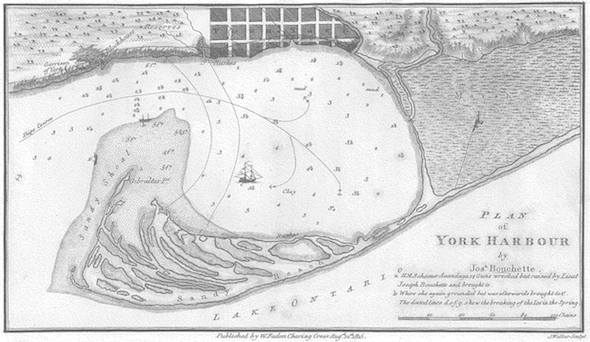
Though it didn't devastate the town of York, the big wind storm of the spring of 1858 certainly left its mark on the landscape. Had it not been for this patch of particularly inclement weather, the Toronto Islands would still be part of a wispy sandbar attached to the shore at the foot of Woodbine Avenue.
Before 1858, the Islands weren't islands. The popular tourist spot was, according to Elizabeth Simcoe, the wife of John Graves Simcoe, "united to the mainland by a very narrow neck of ground." Had it remained, that physical connection could have radically altered the fate of the population shy, off-shore neighbourhood.
December 11, 1944
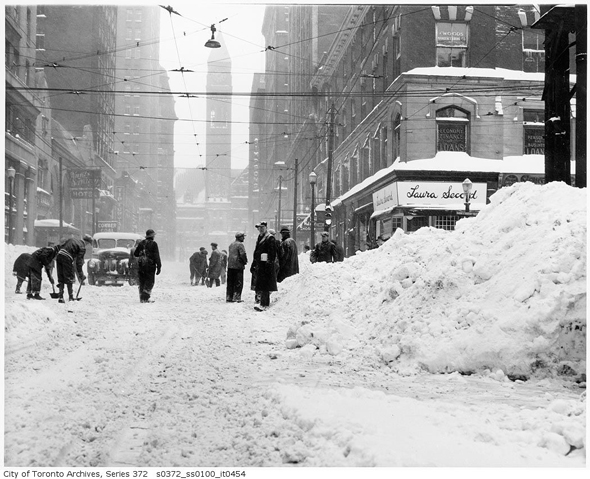
Close to two feet of snow would prove problematic even for cities with modern clearing equipment.
In 1944, a particularly imprecise weather forecast for the Toronto area left the city's inhabitants woefully underprepared for the monster blizzard rolling approaching.
The great storm of 1944, as it came to be known, killed 21 people - 13 of them through exhaustion from shoveling (that's how you know there was a lot of snow.) According to Agatha Barc, high winds on Queen Street knocked over a streetcar, trapping several passengers inside and reducing visibility to zero.
When it all shook out, massive snow drifts were left lining city streets for days after the initial deluge and made many roads were completely impassable. Door-to-door milk and coal deliveries practically fell apart, forcing companies to ask customers to collect their fuel from a central depot. Those that couldn't make it simply had to shiver it out until the weather improved.
October 15, 1954 (Hurricane Hazel)
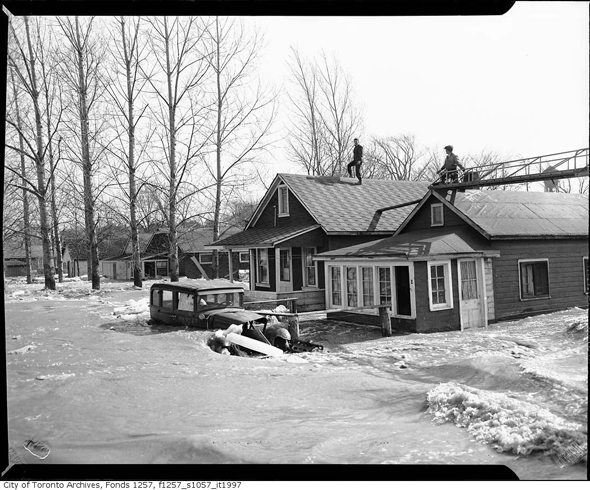
The storm that needs no introduction, Hurricane Hazel was undoubtedly the worst natural disaster to strike Toronto in its history. Roaring its way up from the caribbean, Hazel struck the city just before midnight, delivering lashing rain and strong winds.
The Humber River burst its banks in the ensuing melee, sweeping away entire streets in its path. Homes built on the river's floodplain didn't stand a chance in the face of the rapidly rising water. Weston, Swansea, Mimico, New Toronto, and Long Branch were the hardest hit.
Five firefighters died while on a call to a group of people stranded on top of a car near Dundas and Bloor. 81 others were lost in the flood, mostly in the west end. In total, 11 inches of rain fell over a period of just a few hours. The damage was estimated to be $25 million.
January 2, 1999
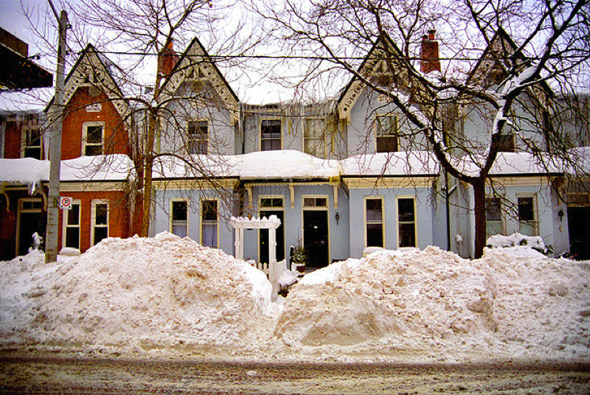
Toronto's most recent pummeling at the hands of winter turned out to be one of its more embarrassing episodes. Back in 1999, a severe snow storm that affected much of southern Ontario, Quebec, and northern parts of the United States dropped between 14 and 18 inches of snow on the city, paralyzing the transit system and practically all roads.
Where as most other communities were able to simply dig their way out, mayor Mel Lastman called in the army to help clear the drifts in Toronto, much to our collective chagrin (and, frankly, relief). Businesses closed, the airport shut down, and the open cut portions of the subway were blocked by windblown snowdrifts. Ambulances struggled to find a way through treacherous streets to rescue the sick and injured.
A total of 400 troops were posted here to help clear roads and rescue people trapped in their homes. The third in a series of winter storms, the 1999 blizzard earned the nickname the "Blizzard of the Century." Fingers crossed this year we don't have anything eligible for the same title.
Photos: Joseph Bouchette's plan of York Harbour 1793, Flickr, and the City of Toronto Archives.
No comments:
Post a Comment